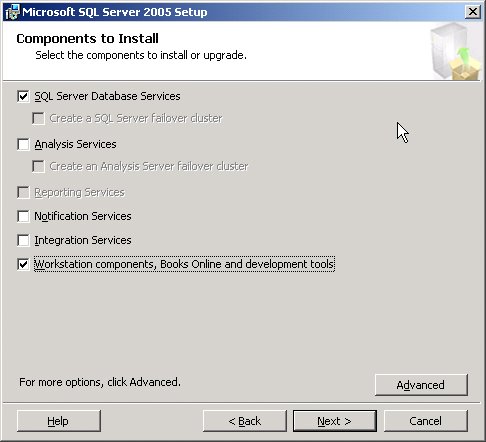Chapter 1. Installing and Upgrading to SQL Server 2005
Microsoft SQL Server is Microsoft's premiere database management system, and SQL Server 2005 is the most powerful and feature-rich version yet. In addition to the core database engine that allows you to store and retrieve large volumes of relational data and the world-class query optimizer that determines the fastest way to process your queries and access your data, dozens of other components increase the usability of your data and make your data and applications more available and more scalable. As you can imagine, no one book could cover all of these features in depth. In fact, the entire Inside SQL Server 2005 series of books covers only the most important features of the core database engine. For a first, high-level view of the components in SQL Server 2005, take a look at Figure 1-1. This dialog box, which appears during product installation, allows you to choose which components of SQL Server 2005 to install. You can also decide which, if any, of the client tools and connectivity components to install. Figure 1-1. List of components to install In this chapter, we'll first look at the prerequisites for installing or upgrading to SQL Server 2005. If you are using SQL Server 7.0 or SQL Server 2000, you can either upgrade or install a new SQL Server 2005 instance and migrate your data. I'll discuss the differences between these two methods and describe the benefits and drawbacks of each. I'll also briefly describe each feature and component that you can install and mention some of the tools you can use to inspect or modify the decisions you make. As I'll discuss in more detail later in the chapter, SQL Server Management Studio replaces two tools from earlier versions: Query Analyzer, through which you could type in your SQL queries for execution, and SQL Server Enterprise Manager, which provided a graphical user interface (GUI) for carrying out certain tasks. When you use Management Studio, if you want to run a SQL query, you must open a query window; to perform actions using the GUI, you use a component of Management Studio called Object Explorer. I won't cover every component of Management Studio in detail; for more information, see this book's online companion content for a white paper by Ron Talmage that describes the SQL Server 2005 tools suite. |
EAN: 2147483647
Pages: 115
